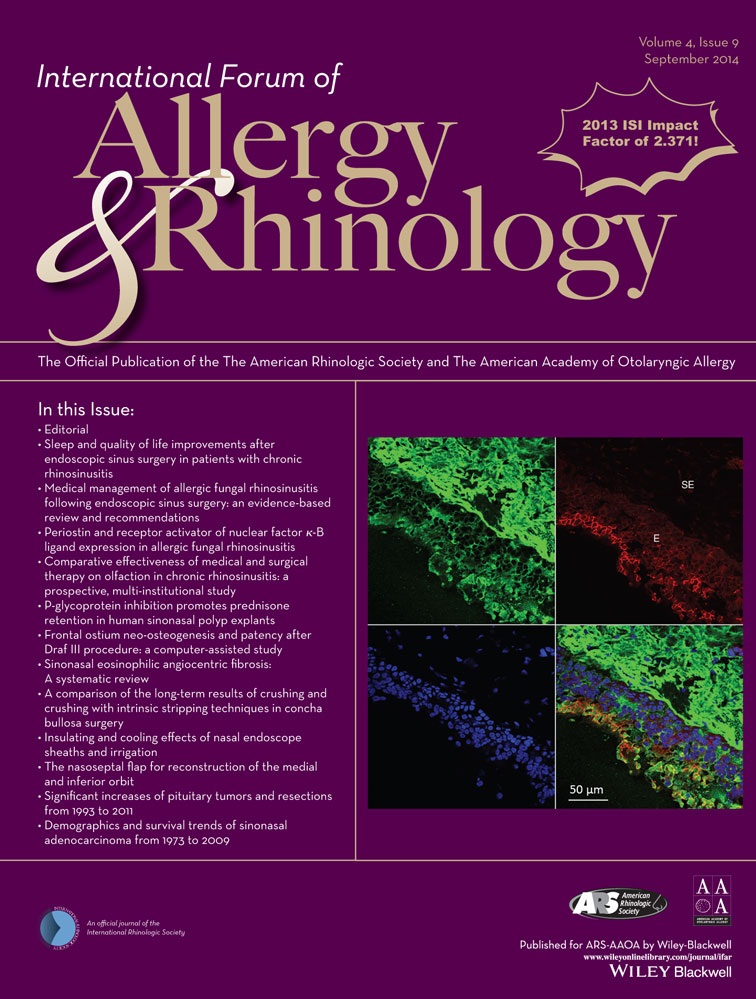Demographics and survival trends of sinonasal adenocarcinoma from 1973 to 2009
Potential conflict of interest: None provided.
Presented at the 117th Annual Meeting of the American Academy of Otolaryngology–Head and Neck Surgery, October 1, 2013, Vancouver, BC, Canada.
Abstract
Background
The purpose of this work was to study the demographics and survival of patients diagnosed with sinonasal adenocarcinoma (SNAC) within the time period of 1973 to 2009 using the Surveillance, Epidemiology, and End Result (SEER) database.
Methods
A retrospective cohort study using the U.S. National Cancer Institute's SEER registry was performed to study the demographics and survival for SNAC from 1973 to 2009. Analysis was conducted based on race, gender, and stage.
Results
In total, 1270 cases of SNAC were analyzed for demographics and survival. Males accounted for 51.6% of cases, while females accounted for 48.4% of cases, amounting to a male to female ratio of 1.06:1.00. Disease specific survival at 5, 10, 15, and 20 years was 65.2%, 50.9%, 40.9%, and 36.5%, respectively. When analyzed by gender, females had higher survival than males, although this difference was not statistically significant. When analyzed by race, the category of other, which encompasses American Indian, Asian, Hispanic, and unknown or unspecified race, was shown to have the best survival, followed by whites and blacks, respectively.
Conclusion
SNAC is a rare tumor classically associated with occupational exposure and carries a variable prognosis. This is the first dedicated large-scale, retrospective analysis of a North American SNAC population. SNAC appears to affect both males and females equally and predominantly affects whites. Patients categorized as other had significantly better survival outcomes, while gender appeared to have no significant effect on survival.




